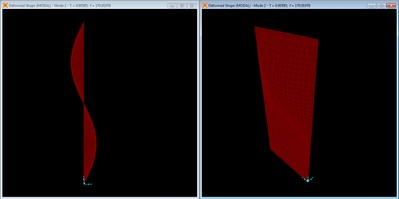Me, together with others, have different results. But first of all: resonances are NOT distortion, NOT, mind You? In general, by principle, basically a resonance may occur in the elastic regime with tiny, yet humanly perceptible micro-meter movement. But there is no element that may actually distort here.
I utterly acknowledge the delight that the o/p gained from doing this and that to his enclosure. But that doesn't mean, that his measurements are correctly performed. There is of course tons of confirmation bias to be criticized. His measurements cannot be reproduced to begin with. Conditions are not clarified so far.
Not the least, while just imitating the constrained layer" technology with some magic hand waving (yes, cargo cult) the idea of a "resonating enclosure" isn't described--nothing of a model, an abstract assembly of elements with properties that are understood.
Measurements without a model just do not exist. Here is no model, so there is no measurement.
I'm strict, I know. But actually, I'm a scientist by education. What the o/p did is exactly anti-science. Thank You, and sorry, really.
I utterly acknowledge the delight that the o/p gained from doing this and that to his enclosure. But that doesn't mean, that his measurements are correctly performed. There is of course tons of confirmation bias to be criticized. His measurements cannot be reproduced to begin with. Conditions are not clarified so far.
Not the least, while just imitating the constrained layer" technology with some magic hand waving (yes, cargo cult) the idea of a "resonating enclosure" isn't described--nothing of a model, an abstract assembly of elements with properties that are understood.
Measurements without a model just do not exist. Here is no model, so there is no measurement.
I'm strict, I know. But actually, I'm a scientist by education. What the o/p did is exactly anti-science. Thank You, and sorry, really.
